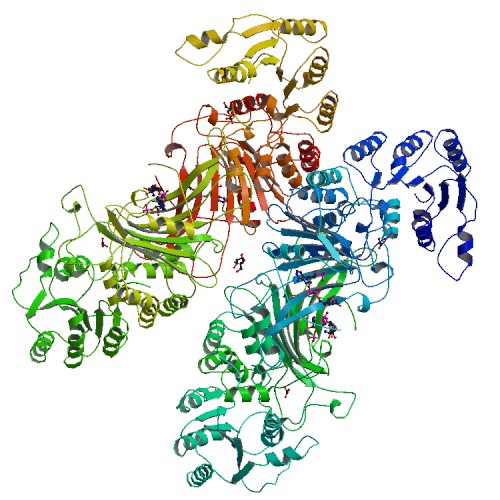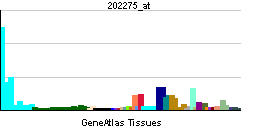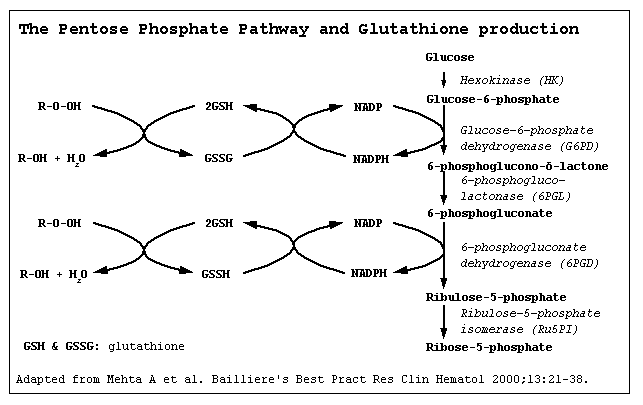Glucose-6-phosphate dehydrogenase
| Glucose-6-phosphate dehydrogenase | |||||||||||||
|---|---|---|---|---|---|---|---|---|---|---|---|---|---|
 PDB rendering based on 1qki. | |||||||||||||
| |||||||||||||
| Identifiers | |||||||||||||
| Symbols | G6PD ; G6PD1 | ||||||||||||
| External IDs | Template:OMIM5 Template:MGI HomoloGene: 37906 | ||||||||||||
| |||||||||||||
| RNA expression pattern | |||||||||||||
 | |||||||||||||
| More reference expression data | |||||||||||||
| Orthologs | |||||||||||||
| Template:GNF Ortholog box | |||||||||||||
| Species | Human | Mouse | |||||||||||
| Entrez | n/a | n/a | |||||||||||
| Ensembl | n/a | n/a | |||||||||||
| UniProt | n/a | n/a | |||||||||||
| RefSeq (mRNA) | n/a | n/a | |||||||||||
| RefSeq (protein) | n/a | n/a | |||||||||||
| Location (UCSC) | n/a | n/a | |||||||||||
| PubMed search | n/a | n/a | |||||||||||
Overview
Glucose-6-phosphate dehydrogenase (G6PD) is a cytosolic enzyme in the pentose phosphate pathway (see image), a metabolic pathway that supplies reducing energy to cells (such as erythrocytes) by maintaining the level of the co-enzyme nicotinamide adenine dinucleotide phosphate (NADPH). The NADPH in turn maintains the level of glutathione in these cells that helps protect the red blood cells against oxidative damage. Of greater quantitative importance is the production of NADPH for tissues actively engaged in biosynthesis of fatty acids and/or isoprenoids, such as the liver, mammary glands, adipose tissue, and the adrenal glands.
Regulation
Glucose-6-phosphate dehydrogenase is stimulated by its substrate NADP+. The usual ratio of NADPH/NADP+ in the cytosol of tissues engaged in biosyntheses is about 100/1. Increased utilization of NADPH for fatty acid biosynthesis will dramatically increase the level of NADP+, thus stimulating G6PD to produce more NADPH.
G6PD converts glucose-6-phosphate into 6-phosphoglucono-δ-lactone and is the rate-limiting enzyme of the pentose phosphate pathway.

Glucose-6-phosphate dehydrogenase deficiency is very common worldwide, and cause acute hemolytic anemia in the presence of simple infection, ingestion of fava beans, or reaction with certain medicines, AAA, antibiotics, antipyretics, and antimalarials.
G6PD is remarkable for its genetic diversity. Many variants of G6PD, mostly produced from missense mutations, have been described with wide ranging levels of enzyme activity and associated clinical symptoms. Two transcript variants encoding different isoforms have been found for this gene.[1]
See also
Further reading
- Vulliamy T, Beutler E, Luzzatto L (1993). "Variants of glucose-6-phosphate dehydrogenase are due to missense mutations spread throughout the coding region of the gene". Hum. Mutat. 2 (3): 159–67. doi:10.1002/humu.1380020302. PMID 8364584.
- Mason PJ (1996). "New insights into G6PD deficiency". Br. J. Haematol. 94 (4): 585–91. PMID 8826878.
- Wajcman H, Galactéros F (2004). "[Glucose 6-phosphate dehydrogenase deficiency: a protection against malaria and a risk for hemolytic accidents]". C. R. Biol. 327 (8): 711–20. PMID 15506519.
References
External links
| Stub icon | This enzyme-related article is a stub. You can help Wikipedia by expanding it. |
Template:Pentose phosphate pathway
de:Glucose-6-phosphat-Dehydrogenase hr:Glukoza-6-fosfat dehidrogenaza it:Glucosio-6-fosfato deidrogenasi ms:G6PD Template:WikiDoc Sources